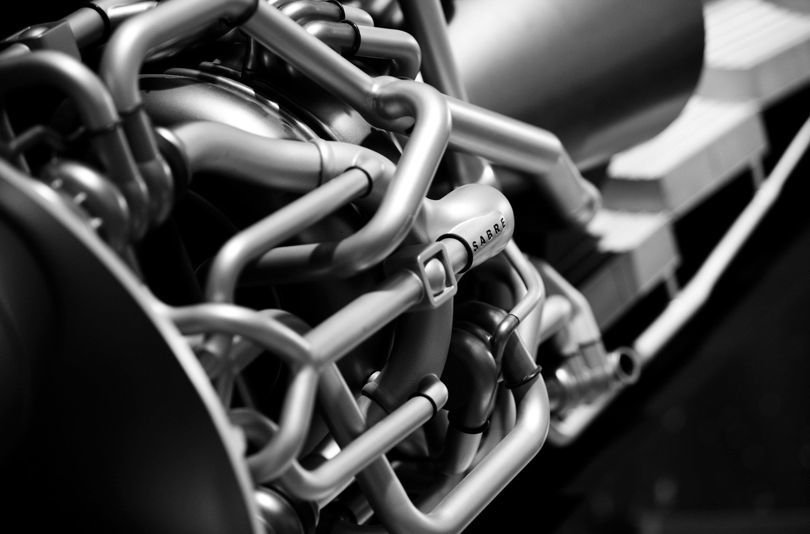Boeing and Rolls-Royce have invested £26.5 million (approx. $37.6 million) in Reaction Engines Limited, a UK-based aerospace company working on the 3D printing enabled SABRE engine and future hypersonic travel.
Capable of Mach 5.4 and Mach 25 speeds, the Synergetic Air-Breathing Rocket Engine (SABRE) travels at 5.4 and 25 times the speed of sound, making military response or long-haul flights a breeze.
Steve Nordlund, Vice President of Boeing investment arm HorizonX comments, “We continue to connect capabilities around the globe with our investment in Reaction Engines, which is our first in a UK-based company,”
“As Reaction Engines unlocks advanced propulsion that could change the future of air and space travel, we expect to leverage their revolutionary technology to support Boeing’s pursuit of hypersonic flight.”
A $142 million project
Reaction Engines was formed in 1989 “to design and develop the technologies needed for a new class of innovative hypersonic propulsion system,” i.e. the SABRE.
SABRE engine development is supported by £60 million (approx. $85.1 million) in funding from the UK Government (the UK Space Agency and the European Space Agency/ESA). The company has also previously received £20.6 million (approx. $29.2 million) from the world’s second biggest defense company and UK based enterprise BAE Systems.
With the latest fund from Boeing and Rolls-Royce, Reaction Engines has raised over £100 million ($142 million) in the past three years.
Reaction Engines Chief Executive Mark Thomas comments, “In addition to providing our largest round of private investment, these new partners bring invaluable expertise in both hypersonics and engine technologies with significant access to target markets,”
“This is not only a vote of confidence in our technology but also underlines belief in our ability to develop a thriving commercial business which will provide strong financial returns for our shareholders.”
3D printing in the SABRE
The SABRE is a hybrid engine capable of flying at both low and high altitudes, using hydrogen/oxygen mixing (low altitude), or stored liquid oxygen (LOX) when launched into space. Its versatility means that aircraft powered by the engine can fly from London to Australia (Around 15,160 km) in the space of four and half hours, or it can be integrated into a reusable spaceplane.
A poignant breakthrough in the development of this hybrid engine is Reaction Engines’ proprietary heat exchanger technology which is “the most powerful means of cooling air in the world.” This technology can remove 400 MW of heat from the air “the equivalent of a small power station.”
The propellant injector system, which prevents ice formation during this heat exchange, is made using additive manufacturing.

Boeing’s pursuit of hypersonic flight
Reaction Engines investor Boeing is also conducting hypersonic flight development in a contract with the U.S. Defense Advanced Research Projects Agency (DARPA) and Californian rocket developer Aerojet Rocketdyne.
According to DARPA the hypersonic spaceplane concept will integrate “numerous state-of-the-art technologies” in its production. Boeing and Aerojet’s involvement with additive manufacturing is expected to play an important part in the process.
Aerojey Rocketdyne’s AR1 engine with 3D printed components is on track for certification in 2019. And Boeing recently signed and agreement with Swiss listed technology group Oerlikon to develop a standard for 3D printed titanium aircraft components.
3D printing boldly goes…
In other aerospace news, Stratasys has announced that a variant on it’s recently-released Antero™ 800NA PEKK-based thermoplastic will be a key component in the production of NASA’s Orion deep-space spacecraft.
Russia’s next generation airline jet engine, the Aviadvigatel PD-35, is also using additive manufacturing. And space exploration technology startup Relativity Space has received $35 million in funding to boost development of the Stargate, dubbed “the largest metal 3D printer in the world.
Vote for your aerospace or automotive application of the year in the 2018 3D Printing Industry Awards.
Be the first with all the latest aerospace developments – subscribe to the 3D Printing Industry newsletter, follow us on Twitter and like us on Facebook.
Over 100 3D printing jobs are now waiting for you. Join our 3D printing jobs service for the latest vacancies in software, hardware and materials.
Featured image shows SABRE Engine concept. Image via Reaction Engines



